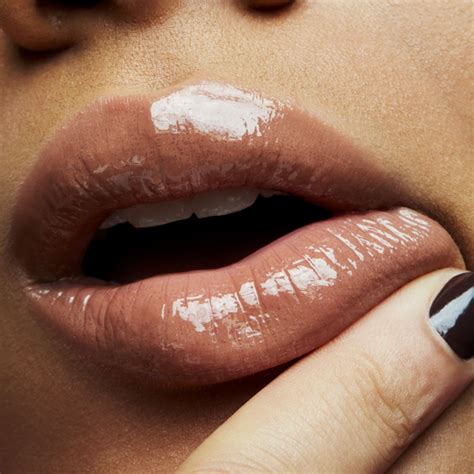Lip gloss, a staple in many makeup bags, can add a touch of shine and color to our lips. However, beneath its appealing appearance, lip gloss can pose several dangers that users should be aware of. From harmful chemicals to potential health risks, it’s essential to understand the possible hazards associated with lip gloss use. Here, we’ll delve into 10 lip gloss dangers to avoid, ensuring that you can enjoy your favorite cosmetic product while safeguarding your health.
1. Chemical Irritation
Many lip glosses contain a variety of chemicals, some of which can cause irritation, especially for individuals with sensitive skin. Ingredients like camphor, menthol, and phenol can lead to redness, swelling, and pain. It’s crucial to read the ingredient list carefully and opt for products labeled as hypoallergenic or organic to minimize the risk of chemical irritation.
2. Allergic Reactions
Allergic reactions to lip gloss can range from mild to severe. Symptoms may include itching, burning sensations, blistering, or even anaphylaxis in extreme cases. If you notice any unusual reactions after applying lip gloss, discontinue use immediately and consult a dermatologist or healthcare provider.
3. Infections from Shared Use
Sharing lip gloss can lead to the transmission of infections, including cold sores (herpes simplex) and other viral or bacterial infections. It’s imperative to never share lip gloss or any makeup products to protect your health and the health of others.
4. Overuse and Dependence
While not as commonly discussed as other cosmetic dangers, overuse of lip gloss can lead to dependence on its moisturizing effects. Some ingredients in lip gloss can dry out your lips over time, causing you to apply more frequently. This cycle can be broken by using lip gloss moderately and incorporating a lip balm or lip scrub into your routine for healthier lip care.
5. Exposure to Endocrine Disruptors
Certain chemicals found in some lip glosses, such as parabens and phthalates, are known endocrine disruptors. These substances can interfere with hormone function, potentially leading to issues like reproductive problems, developmental issues, and even certain types of cancer. Choosing products that are paraben-free and phthalate-free can help mitigate this risk.
6. Unregulated Ingredients
The cosmetic industry is less regulated than the pharmaceutical industry, which means that some ingredients in lip gloss may not undergo rigorous testing for safety. Being mindful of the ingredients and looking for products from reputable manufacturers can help minimize exposure to potentially harmful substances.
7. Environmental Impact
The packaging of lip gloss, typically made of plastic, contributes to environmental pollution. Moreover, the production process and disposal of these products can have a significant ecological footprint. Opting for eco-friendly or refillable lip gloss options can reduce your environmental impact.
8. Lip Damage from Ingredients
Some lip gloss ingredients, especially those designed to plump lips, can cause damage over time. For instance, cinnamon, wintergreen, or peppermint can irritate the lips, leading to dryness and potentially causing lip eczema or cheilitis. Always patch test a new lip gloss and start with a small amount to gauge your lips’ reaction.
9. Increased Risk of Lip Cancer
While rare, certain ingredients in lip care products, including some lip glosses, have been linked to an increased risk of lip cancer due to their potential carcinogenic effects. Sun protection is key; look for lip gloss with SPF to protect your lips from UV damage, a known risk factor for lip cancer.
10. Misleading Labels
Some lip gloss products may carry misleading labels, claiming to be natural or organic when they actually contain synthetic ingredients. Being a savvy consumer by reading labels carefully and researching the brand can help you avoid products with deceptive marketing.
Conclusion
While lip gloss can be a fun and expressive part of your beauty routine, it’s essential to be aware of the potential dangers associated with its use. By choosing products wisely, being mindful of ingredients, and adopting good hygiene practices, you can enjoy the benefits of lip gloss while protecting your health and the environment. Remember, a beautiful smile starts with healthy lips.
FAQ Section
How can I prevent chemical irritation from lip gloss?
+To prevent chemical irritation, always read the ingredient list and look for products labeled as hypoallergenic or fragrance-free. Performing a patch test before using a new lip gloss can also help identify any potential allergens or irritants.
Can lip gloss cause long-term health issues?
+Some ingredients in lip gloss have been linked to long-term health issues, including endocrine disruption and potential carcinogenic effects. Choosing products with safer ingredients and using them in moderation can minimize these risks.
How often should I apply lip gloss to avoid dependence?
+Avoid applying lip gloss too frequently, as this can lead to a cycle of dependence due to drying ingredients. Instead, apply lip gloss when needed for moisturizing or cosmetic purposes and consider incorporating a lip balm or lip scrub into your routine for healthier lip care.
By being informed and taking proactive steps, you can safely enjoy the benefits of lip gloss while minimizing its potential risks. Remember, knowledge is the first step towards a healthier, more beautiful you.



